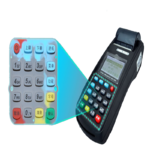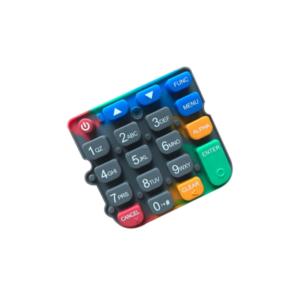Specification:
| Color | Customized |
| Size and weight | Customized |
| Hardness | 50-60 Shore A |
| Tolerance | 0.1mm |
| Certification | ISO 9001,RoHS |
| Place of Original | Xiamen,China |
| Application | Electronic Devices |
| Advantage | Versatility and Tactile Feedback |
| Transportation | By Sea,Express |
Overview:
Silicone Keypads serve as a highly effective interface for your product, finding extensive application in consumer electronics, defense systems, aerospace technology, and industrial electronic devices. Renowned for providing tactile feedback and robust environmental resistance, keypads should be a fundamental consideration in the strategic design of your upcoming machine interface project.
Types of rubber keypads construction:
In the fabrication of silicone keypads, contact division is achieved through three specialized construction methods:
- Utilizing a printed conductive paste, contact areas are strategically positioned on the conductive circuit, allowing for the creation of custom contact shapes within the plane.
- Employing vulcanized conductive elements, contact areas are positioned along the conducting circumference, with options limited to standardized shapes.
- Incorporating a metal plate or switch mounted on a conductive circuit, the rubber keypad serves as a pusher mechanism for precise tactile feedback.
Surface Treatment
- Spraying:Applying a special coating to enhance appearance, provide additional protection, and adjust tactile feel.
- Laser Etching:Using laser technology to engrave customized designs or markings on the silicone surface.
- Printing:Adding patterns, logos, or text to the silicone keypad surface through printing techniques for a customized appearance.
- Hardness Adjustment:Altering the silicone keypad’s hardness by adjusting the formulation or manufacturing process to meet specific usage requirements.
- Dust/Waterproof Coating:Applying coatings to enhance durability and reliability by making the silicone keypad surface dustproof or waterproof.







